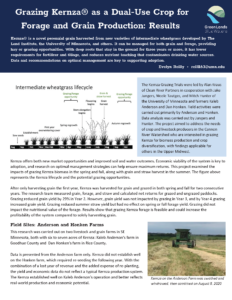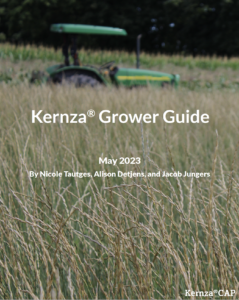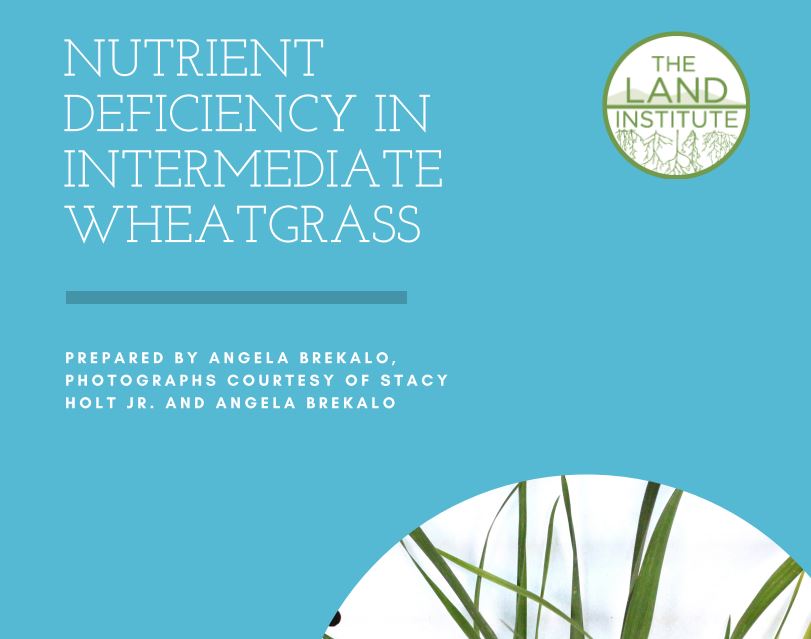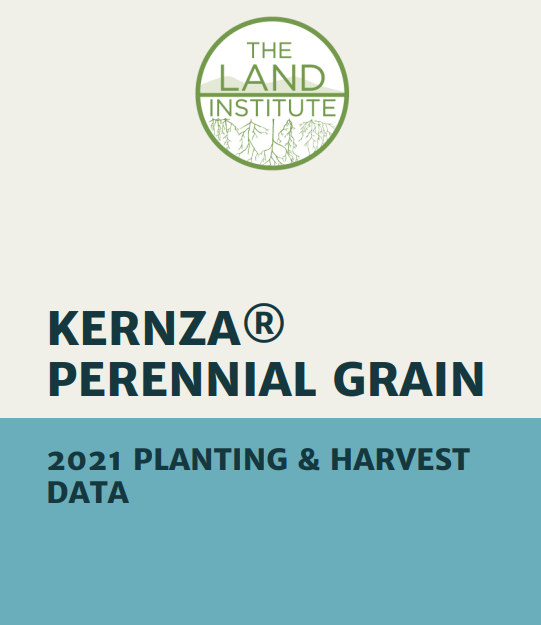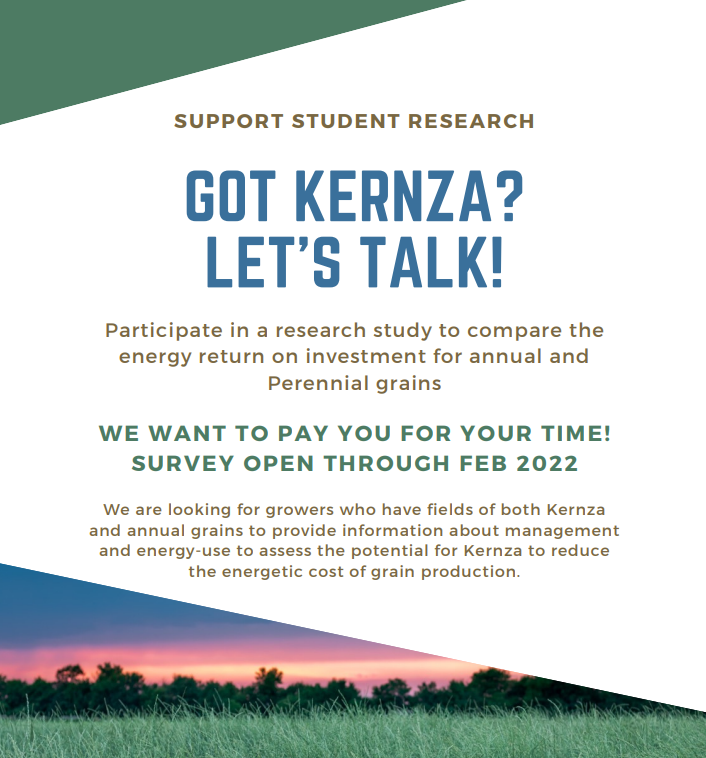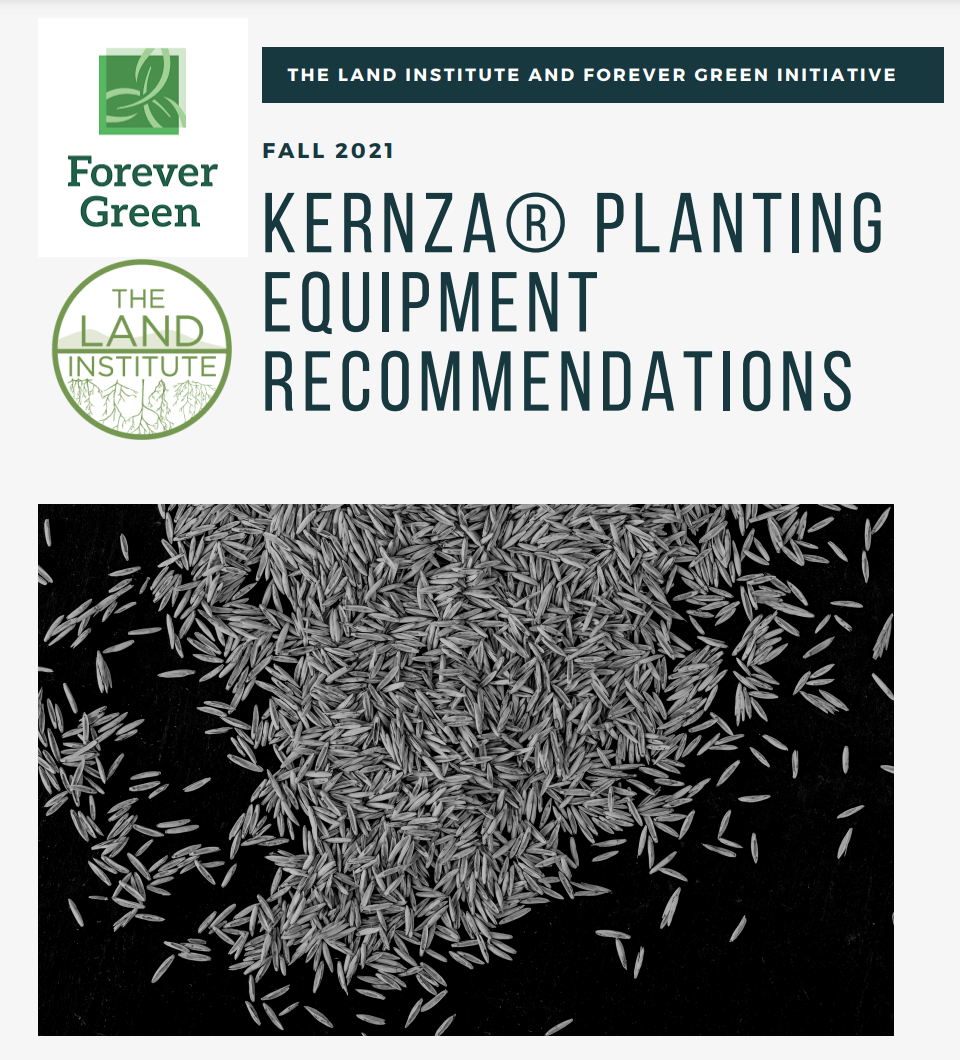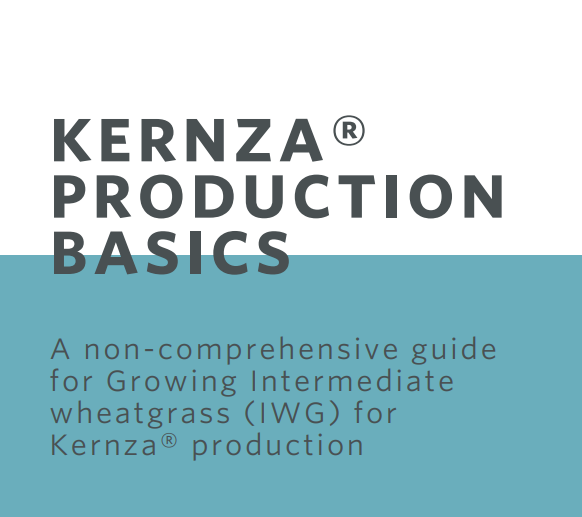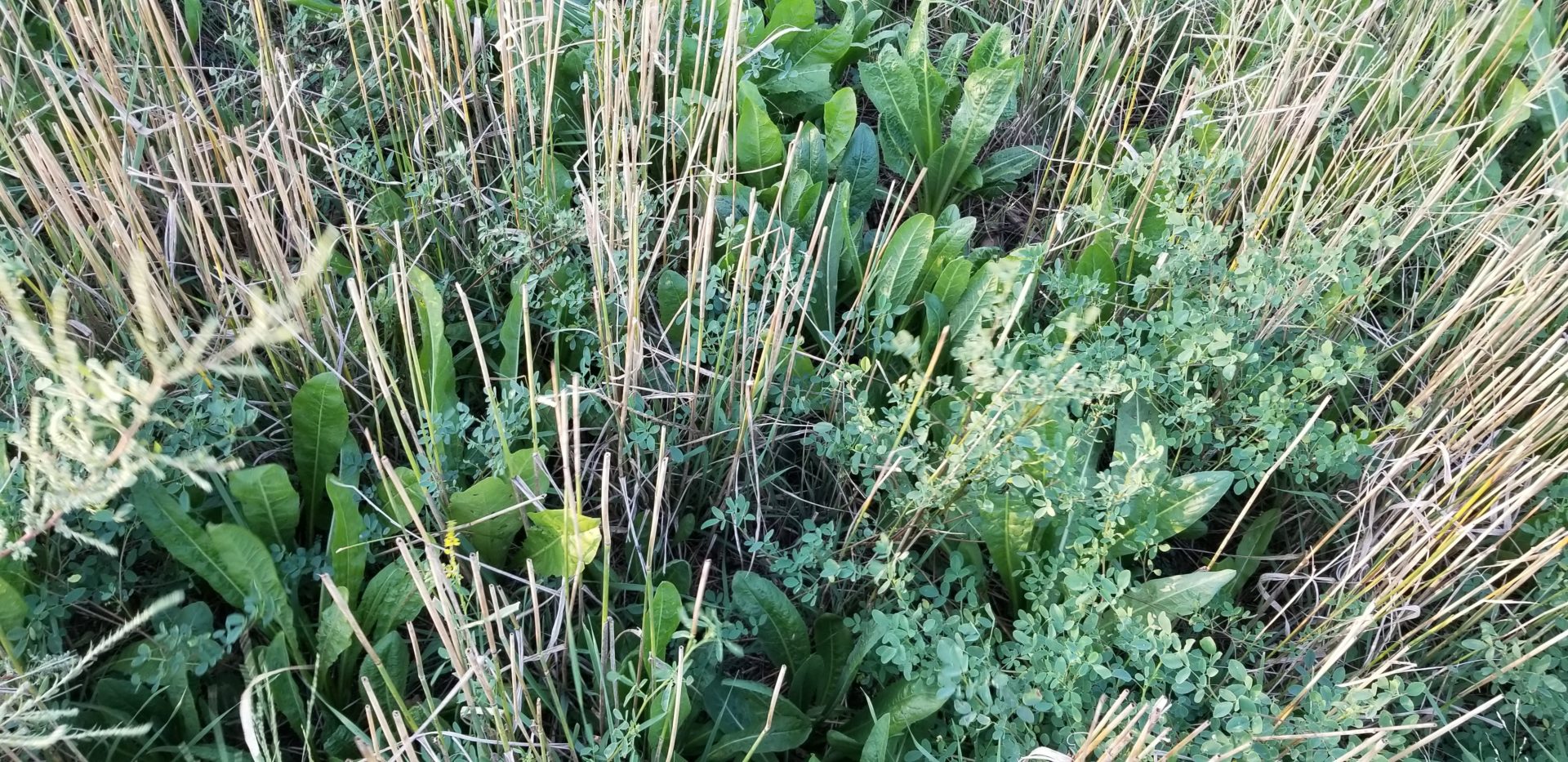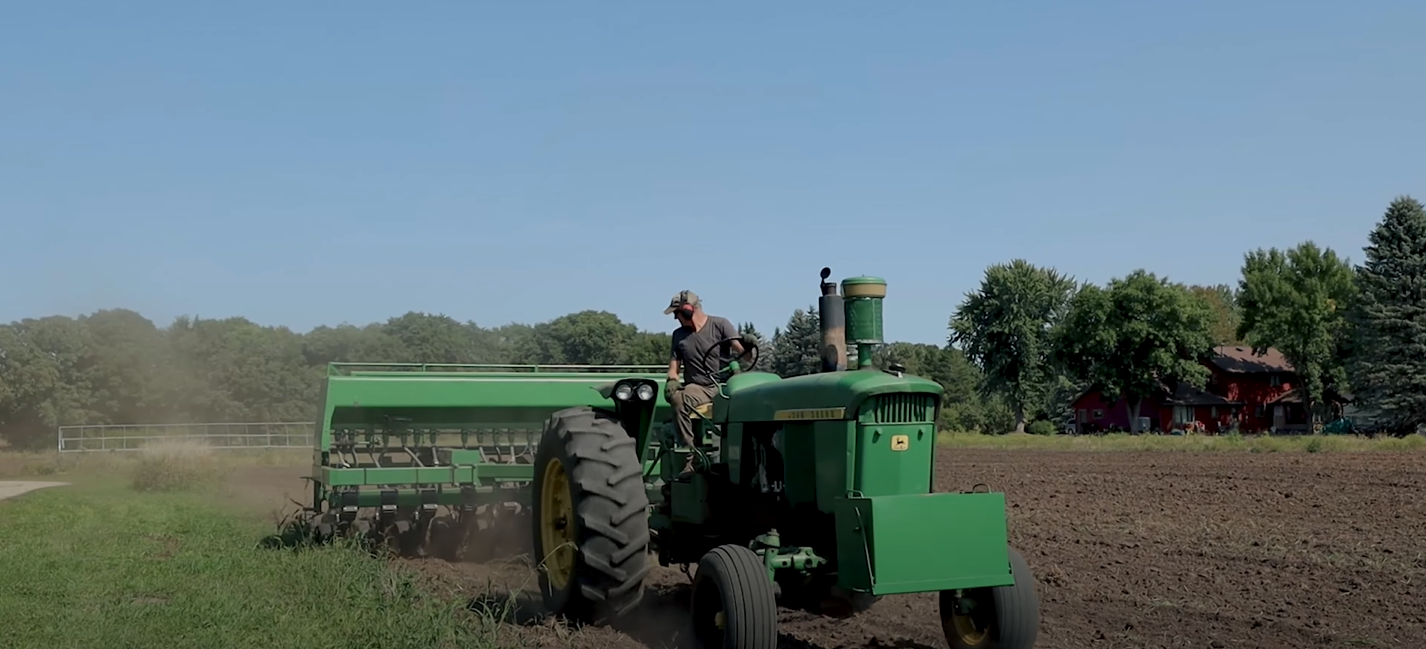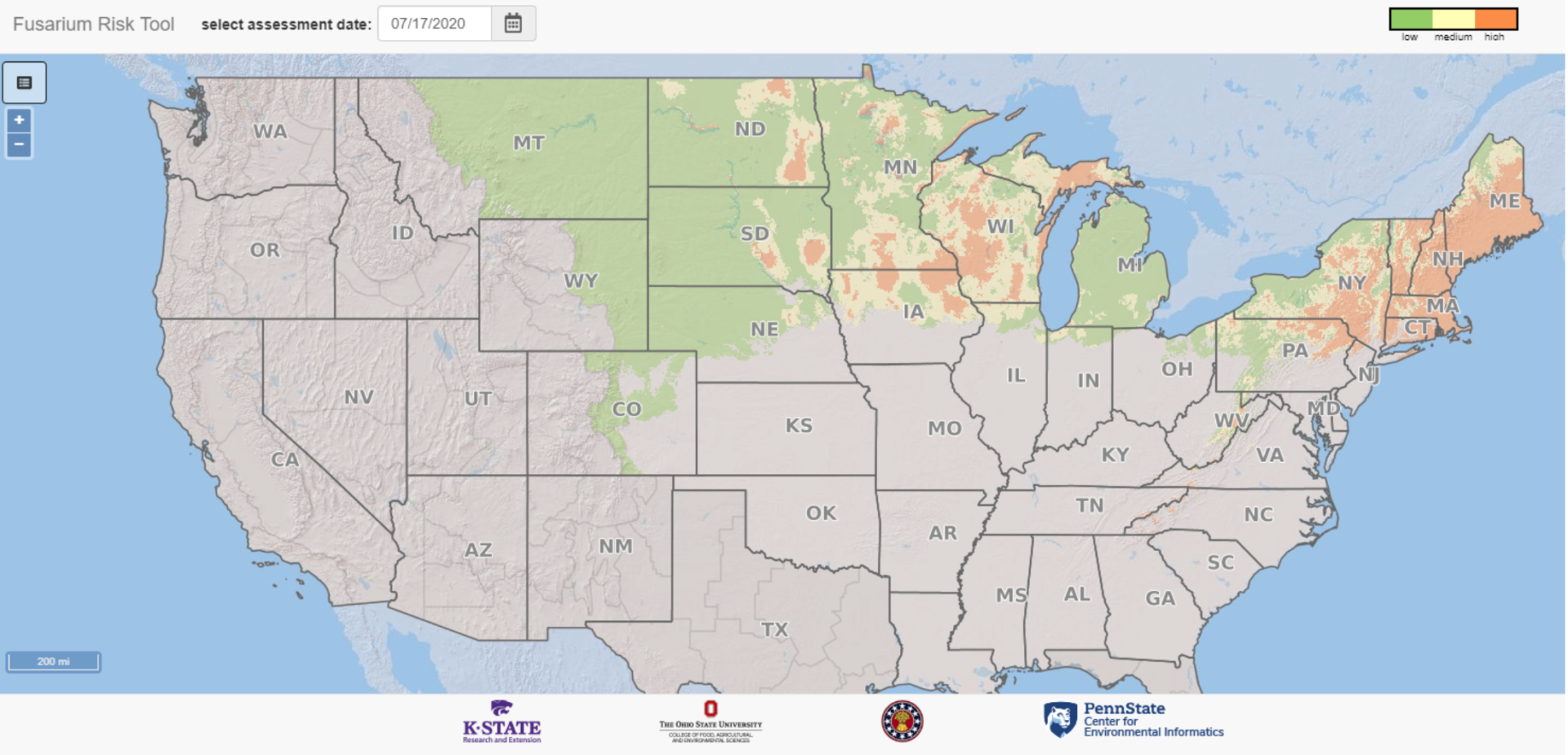How Farmers Are Benefitting
- Perennials regenerate soil health and sequester carbon
- Perennials have up to seven times the root mass of annual grain crops
- Perennials provides wildlife habitat, including nest sites for birds and food for microbes
- As a perennial, intermediate wheatgrass does not require annual tillage
- Once established, intermediate wheatgrass requires less fertilizer and little or no herbicide
Interested in Growing Kernza®?
Apply to grow Kernza® Perennial Grain
We appreciate your interest in Kernza®!
If you want to become a licensed commercial grower, please complete the Kernza® Grower Application using the link below.
Why the trademark license?
Kernza® is the registered trademark owned by The Land Institute. Certain varieties of Intermediate wheatgrass that have been bred for grain quality characteristics can be grown as Kernza®. The Land Institute and our partners work with growers, handlers, and makers who sign trademark licensing agreements and use these varieties. These agreements allow us to continue the research to produce the best agronomic, genetic, and supply chain data possible for Kernza® grain. Everyone involved is part of a worldwide experiment in revolutionizing agriculture. The Land Institute collects data and disseminates the most relevant information for stakeholders. The trademark license and its associated royalties make this possible.
Where does Kernza® grow?
We do not know the exact limits yet! We do know that Kernza® needs temperatures between 32 °F and 50 °F (0 °C and 10 °C) for six weeks in order to flower and produce grain. Kernza® has been successfully grown as far north as 60° N latitude (Upsaala, Sweden) and as far south as 39° N (Salina, KS). We believe it can be grown nearer the equator at higher elevations.
How do I grow Kernza®?
Planting:
Intermediate wheatgrass is usually planted in the fall, but planting it in the spring can help to get it established. However, it will not produce grain the first season if planted in the spring. Most growers in the northern hemisphere will plant between August 1st and September 15th. Planting with a seed drill or a seeder and packer at a depth of 0.5 inches has been successful.
Harvesting:
Kernza® grain is harvested in the late summer or early fall after most of the heads are mature and brown. It can be swathed and collected with a pick-up header or direct-harvested with a stripper header or grain header on a combine adjusted for its small size and light seed.
Kernza® Production Guide
Kernza® Planting Guide
Can I use intermediate wheatgrass grown for Kernza® grain as a forage crop?
The grain harvested from intermediate wheatgrass (IWG) that has been bred specifically for grain quality and yield is marketed under the Kernza® name. However, the leaves and stems can also be used as a forage. Crop residue that is removed after grain harvest has had relatively high protein and some growers have used it as a low quality animal feed. Other Kernza® growers have used the intermediate wheatgrass fields for grazing. More information on utilizing Kernza® as a dual use crop can be found here.
What are grain yields for Kernza®?
Kernza® yields vary depending on environmental and management conditions. Research yields can top 1,000 lbs/acre while production acres tend to have lower yields. Average yields in 2021 were a little over 400lbs/acre with experienced growers achieving up to 1200lbs. As new varieties of Kernza® are developed and management techniques refined, we expect yields to rise and become more stable.
What is the price of Kernza® grain?
The market for Kernza® is new and emerging. As such, prices have been volatile, fluctuating with each year’s yield. We encourage growers and buyers to work together on pricing structures that can work for all stakeholders across the supply chain. The Land Institute and our partners hope to produce market data and supply chain analyses in the coming years.
Are any herbicides approved for Kernza® grain production?
In late 2021, the first broadleaf herbicide was approved for use on IWG for grain production (e.g. Kernza): a 2,4-D Amine product from Nufarm, Weedar 64. This Memo provides background information, recommendations for growers, and discusses implications of new weed management tools for Kernza® grain production.
What EQIP and CSP programs are Kernza producers eligible for?
The E3280 Perennial Grain enhancement is available to new Kernza producers through EQIP and CSP programs. The enhancement provides a scenario/practice payment to the producer for the time needed to plan and implement changes to crop rotations that effectively add a perennial grain to their cropping system.
Click here to learn more.
Already a Kernza® Grower?
Production Resources
Download the 2023 Grower Guide below for the most up-to-date information on how to plant, grow, manage, harvest, and market Kernza®.
2023 Kernza® Grower Guide
Download the Production Guide below, which includes the basics of growing Intermediate wheatgrass (IWG) for Kernza® production.
Kernza® Production Guide
The Forever Green Initiative and The Land Institute collaborated to create updated recommendations for planting Kernza®. Click the link below to learn more.
Kernza® Planting Guide
Post-Harvest Resources
Post-harvest handling of Kernza grain presents many unique challenges for growers. The Post-Harvest Resource Toolkit, developed in a collaboration between the Wisconsin-grown Kernza Supply Chain Hub (a pilot project led by Clean Wisconsin and Michael Fields Agricultural Institute), KernzaCAP and UW-Madison Extension, provides growers with a variety of resources to help them optimize handling, storage, quality testing, transportation, and processing to preserve grain quality.
These resources, supported by the generous funding of the Daybreak Fund and USDA’s KernzaCAP, are intended to help growers streamline planning and operational logistics from point-of-harvest all the way to the point-of-sale with end-buyers. Growers and handlers throughout the Midwest and beyond will find these resources useful, with a few resources tailored specifically for Wisconsin growers by the WI-grown Kernza Supply Chain Hub, for reference.
Kernza® Post-Harvest Resource Toolkit
Cleaning and Dehulling Resources
The Agricultural Utilization Research Institute has various resources on cleaning and dehulling
- This comprehensive report details research on various cleaning, dehulling and separation techniques for Kernza® grain
- This infographic provides information on the necessary processing steps for cleaning and preparing Kernza® perennial grain for end users
Learn more about Perennial Pantry’s experience processing Kernza® grain in this interview.
Ecosystem Services Payment Programs
Ecosystem Services Payment Programs: An Evaluation of Opportunities for Kernza® Growers
Download the full report
UMN Forever Green EECO Program (Economic and Environmental Clusters of Opportunity)
Click here to learn more about EECO (2024-2025)
Review Identity Preserved Program
The Identity Preserved Program was established and is managed by The Land Institute to ensure that Kernza® varieties produce the highest quality seed and grain for the market. The program ensures that growers collect and provide data, integrating them into a world-wide, production-scale research project to inform the research and product goals of The Land Institute and its partners. Download the Identity Preserved Program protocol here.
Are any herbicides approved for Kernza® grain production?
In late 2021, the first broadleaf herbicide was approved for use on IWG for grain production (e.g. Kernza): a 2,4-D Amine product from Nufarm, Weedar 64. This Memo provides background information, recommendations for growers, and discusses implications of new weed management tools for Kernza® grain production.
Featured
2024 Kernza® Planting and Harvest Report
Featured
2023 Kernza® Planting and Harvest Report
Featured
Grazing Kernza® as a Dual-Use Crop
Featured
Kernza® Grower Guide 2023
Featured
2022 Kernza® Planting & Harvest Report
Featured
Nutrient Deficiency in Intermediate Wheatgrass
Featured
2021 Planting & Harvesting Data
Featured
Survey for Kernza® Growers: Energy Returns of Annual and Perennial Grains
Featured
Approaches to Managing Intermediate Wheatgrass for Dual-Use
Forage and Kernza® Perennial Grain Production
Featured
Kernza® Planting Guide
Featured


